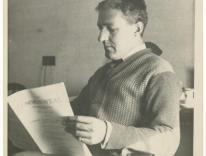That's one of the phrases and pieces of advice in yet another story about how to keep your (my) aging brain agile. The story is from the NYT the other day and has predictably been buzzing around the Interwebs. But it is a good piece, with some comforting new research and handy mind excercises--including this:
Educators say that, for adults, one way to nudge neurons in the right direction is to challenge the very assumptions they have worked so hard to accumulate while young. With a brain already full of well-connected pathways, adult learners should jiggle their synapses a bit by confronting thoughts that are contrary to their own, says Dr. Taylor, who is 66.Teaching new facts should not be the focus of adult education, she says. Instead, continued brain development and a richer form of learning may require that you bump up against people and ideas that are different. In a history class, that might mean reading multiple viewpoints, and then prying open brain networks by reflecting on how what was learned has changed your view of the world.
But my favorite bit is here:
Recently, researchers have found even more positive news. The brain, as it traverses middle age, gets better at recognizing the central idea, the big picture. If kept in good shape, the brain can continue to build pathways that help its owner recognize patterns and, as a consequence, see significance and even solutions much faster than a young person can.The trick is finding ways to keep brain connections in good condition and to grow more of them.The brain is plastic and continues to change, not in getting bigger but allowing for greater complexity and deeper understanding, says Kathleen Taylor, a professor at St. Marys College of California, who has studied ways to teach adults effectively. As adults we may not always learn quite as fast, but we are set up for this next developmental step.
It almost sounds like wisdom.


